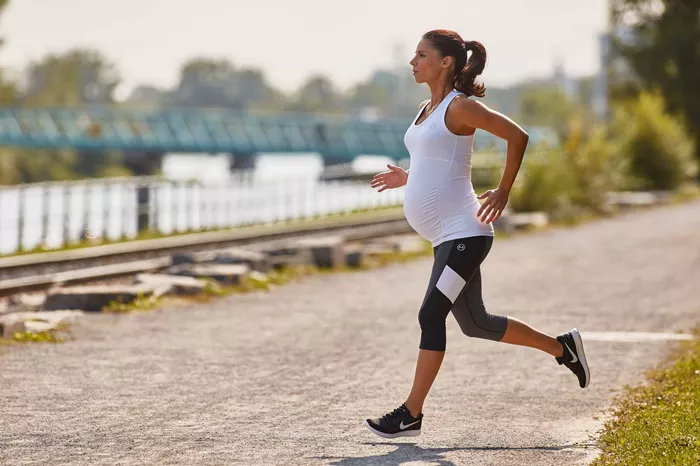Pregnancy is a transformative time in a woman’s life, bringing about significant physical and emotional changes. Staying active during pregnancy is crucial for both the mother and the baby’s health. Walking is one of the most recommended exercises due to its safety and ease of implementation. This article explores the number of steps a pregnant woman should walk daily, along with the benefits, precautions, and tips for incorporating walking into a pregnancy routine.
Benefits of Walking During Pregnancy
Improves cardiovascular health
Walking helps maintain cardiovascular fitness. It strengthens the heart and lungs, enhancing overall stamina and endurance.
Reduces the risk of gestational diabetes
Regular walking can lower the risk of developing gestational diabetes by maintaining healthy blood sugar levels.
Helps control weight gain
Walking helps manage weight gain during pregnancy, preventing excessive weight gain that can lead to complications.
Eases pregnancy discomforts
Walking can alleviate common pregnancy discomforts such as back pain, constipation, and swelling in the legs and feet.
Enhances mood and reduces stress
Physical activity, including walking, releases endorphins that improve mood and reduce stress levels.
Promotes better sleep
Regular walking can help improve sleep quality, which can be challenging during pregnancy.
Prepares the body for labor
Walking strengthens muscles and improves flexibility, aiding in a smoother labor and delivery process.
Recommended Steps for Pregnant Women
General guidelines
For most pregnant women, aiming for at least 7,000 to 10,000 steps a day is beneficial. This range aligns with general recommendations for maintaining good health.
First trimester
In the first trimester, women can usually continue their pre-pregnancy walking routine. If they were not active before, starting with 5,000 to 6,000 steps a day is a good goal.
Second trimester
During the second trimester, most women feel more energetic and can increase their steps to 7,000 to 9,000 a day. It’s important to listen to the body and adjust as needed.
Third trimester
In the third trimester, maintaining 7,000 to 10,000 steps a day can be challenging due to the increased physical burden. Aiming for 5,000 to 7,000 steps, with breaks and rest, is advisable.
SEE ALSO: How Many Days is a Normal Pregnancy?
Precautions and Safety Tips
Consult with a healthcare provider
Before starting or continuing any exercise routine during pregnancy, it’s essential to consult with a healthcare provider to ensure it is safe for both mother and baby.
Wear supportive shoes
Proper footwear is crucial to prevent injury and provide support during walking. Choose shoes with good arch support and cushioning.
Stay hydrated
Hydration is vital, especially during pregnancy. Drink plenty of water before, during, and after walking to stay hydrated.
Avoid overheating
Pregnant women should avoid walking in extreme heat or humidity. Choose cooler parts of the day or indoor walking areas to prevent overheating.
Listen to your body
It’s important to pay attention to the body’s signals. If feeling dizzy, short of breath, or experiencing pain, stop walking and rest.
Maintain good posture
Keeping a good posture while walking can prevent back pain and other discomforts. Stand tall, engage the core, and keep the shoulders back and relaxed.
Gradually increase intensity
For those new to walking, start with shorter durations and gradually increase the intensity and duration as the body adapts.
Incorporating Walking into Daily Routine
Set realistic goals
Set achievable daily or weekly step goals. Gradually increase the goals as stamina improves.
Track progress
Using a pedometer or smartphone app can help track daily steps and monitor progress.
Break it up
If walking for long periods is challenging, break it up into shorter sessions throughout the day.
Make it enjoyable
Listen to music, podcasts, or audiobooks to make walking more enjoyable. Walking with a partner can also make the activity more engaging.
Combine with other activities
Incorporate walking into daily activities, such as walking while talking on the phone, parking further away, or taking stairs instead of elevators.
Signs to Watch Out For
Excessive fatigue
Feeling excessively tired after walking may indicate overexertion. It’s essential to balance activity with rest.
Swelling or pain
Unusual swelling or pain in the legs, feet, or other body parts should be addressed promptly.
Dizziness or shortness of breath
Experiencing dizziness or shortness of breath while walking is a sign to stop and rest. If symptoms persist, seek medical advice.
Regular contractions
Frequent or regular contractions while walking may require a reduction in activity level and consultation with a healthcare provider.
Vaginal bleeding or fluid leakage
Any signs of vaginal bleeding or fluid leakage should be reported to a healthcare provider immediately.
Walking During Different Stages of Pregnancy
First trimester
During the first trimester, most women can maintain their usual walking routine. It’s a good time to establish a habit of regular walking.
Second trimester
The second trimester is often the most comfortable for walking. Energy levels are typically higher, and the risk of miscarriage decreases.
Third trimester
In the third trimester, walking can become more challenging due to the increased weight and physical changes. It’s important to adjust the pace and duration as needed.
Alternatives to Walking
Swimming
Swimming is an excellent low-impact exercise that can be an alternative to walking, especially in the later stages of pregnancy.
Prenatal yoga
Prenatal yoga can help maintain flexibility, strength, and relaxation. It complements walking well.
Stationary biking
Stationary biking is another low-impact option that can provide cardiovascular benefits without the strain of walking.
Conclusion
Walking is a highly recommended exercise for pregnant women due to its numerous health benefits and ease of incorporation into daily routines. Aiming for 7,000 to 10,000 steps a day, with adjustments based on individual comfort and health, can promote a healthy pregnancy. Always consult with a healthcare provider before starting or modifying an exercise routine, and listen to the body’s signals to ensure a safe and enjoyable walking experience during pregnancy.


